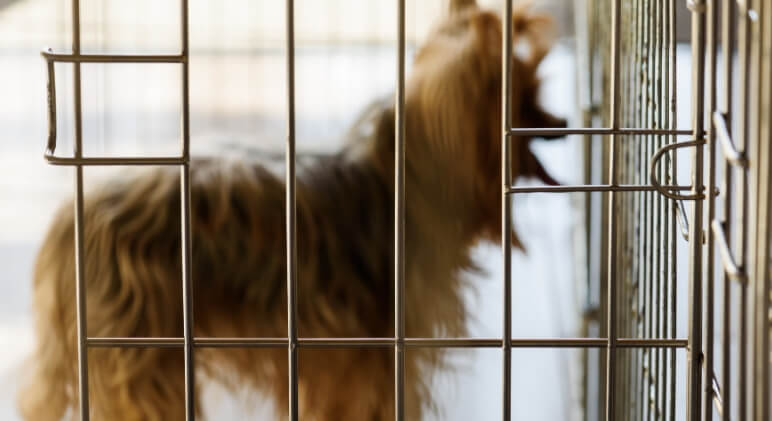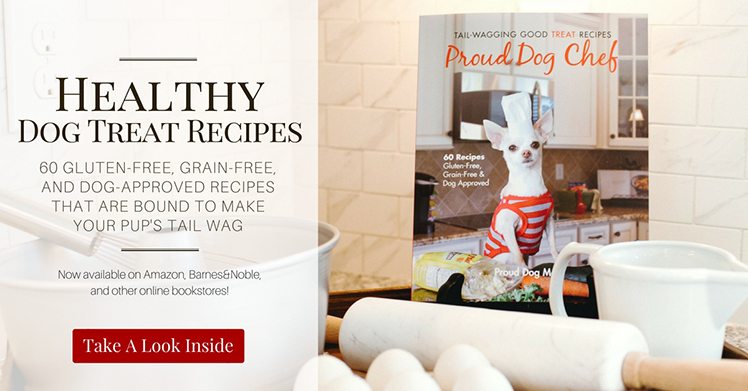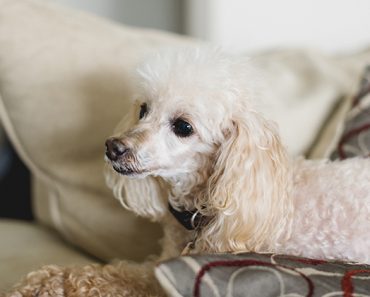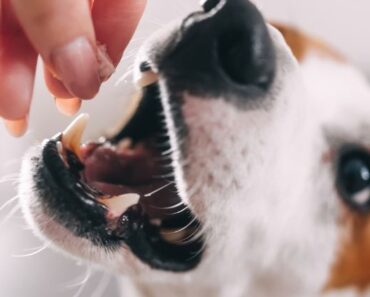Welcoming a new puppy into your home? One of the best things you can do is invest in a dog crate. Crates offer a safe and controlled setting when your full attention can’t be on little Fido. And get this: Since dogs are naturally den animals, they actually like confined spaces. So, when introduced properly, the crate will become a secure place for your pooch to rest and relax.
A few benefits of crate training your dog:
- Get your puppy into a routine
- Help speed up the potty training phase
- Help keep bad habits from forming, like chewing the furniture
- Get your puppy comfortable with alone time, ultimately reducing risk of developing separation anxiety
- Gives your puppy a safe haven during stressful times
- Prepares pets for travel
Before we dive into the 5-step crate training success plan, it’s important to note: You shouldn’t leave your dog in the crate for hours on end. If you have a young puppy who isn’t familiar with the crate yet, keep sessions anywhere from 15 minutes to an hour. As your pup matures, if you’re heading off to work, cap crate time to 4 hours. Either come home at lunch to let your fur kid out for some exercise or enlist the help of a professional dog walker!
5-Step Crate Training Success Plan
1) Fill The Crate With Your Pup’s Stuff
Before you introduce your fur baby to their new crate, fill it up with their bed/blanket and some toys. This will help your pup view the crate as a fun place.

2) Introduce Your Dog To The Crate With The Door Open
Once the crate is all set up, let your pup explore! If he sniffs around and shows interest on his own, give lots of praise. If not, sit on the ground next to the crate and, with a happy tone to your voice, call your canine kid over.
After a few moments of exploring, invite your pup inside. Never force your puppy into the crate, as this will create a negative experience. Instead, you want him to go inside on his own. To make a walk inside more appealing, put a high-value treat (like a piece of boiled chicken, baked beef liver bites, or a sardine-based treat) in the middle of the crate. Once your puppy walks inside, it’s time to praise, praise, praise. You always want to make the crate a positive place, so praise is super important.
Another great way you can encourage your puppy to walk inside the crate is by placing his food bowl in there during mealtimes. Again, it’s essential to keep the door open while your puppy gets used to the crate, as you don’t want him to feel trapped.
3) Close The Door For A Short Period Of Time
Once your puppy seems comfortable inside the crate, and is walking in there on his own, it’s time to close the door. At first, only keep the door shut for a few seconds, so your puppy doesn’t even have time to react. When you open the door, give lots of praise. Try this several times over a span of about five minutes. Each time you shut the door, keep it closed for a slightly longer amount of time.
To make this step even more comfortable for your pup, you can leave a yummy treat-filled KONG inside.

4) Leave The Room
Now that your puppy is familiar with the crate and isn’t afraid of a shut door, try leaving the room. Leave your puppy in the crate for about a minute or two. Again, to make this step easier on your puppy, you can leave a treat-filled KONG inside the crate.
When you come back into the room, stay calm. If your pet is whining, wait to open the door until he calms down. If you let your little one out when he cries, he will associate crying with getting what he wants.
5) Leave The House
The first few times you leave your dog in the crate home alone, only leave for a short amount of time. Try a quick trip to the gas station or grocery store. *Note: When leaving the house, don’t leave a treat-filled KONG inside. It’s better to supervise your dog during this type of play.
Extra Tips …
- Don’t rush the process. While some dogs take to the crate right away, it may take others longer.
- Never use the crate as a form of punishment. The crate should always be viewed as a positive place and somewhere your furbaby can go to feel safe.
- Don’t leave your puppy in the crate for prolonged periods of time, to avoid soiling inside their den.
- Put your puppy’s crate in an area where your family spends a lot of time. Don’t put it in an isolated section of your home or, worse, outside.
- Check the temperature around your puppy’s crate to ensure it’s not too hot or too cold. You want to make your puppy as comfortable as possible.
- Make sure nothing is hanging or dangling into the crate that could potentially harm your puppy.
- Remove your puppy’s collar prior to leaving them in the crate. This removes any risk of the collar getting caught on something and choking your dog.

Choosing The Right Crate For Your Dog
Brands, types, and sizes – there are a bunch of different crates on the market, and picking the right one is crucial.
Sizing
One of the biggest mistakes dog owners make when choosing a crate is getting one that’s way too big. If you’re using the crate to help potty train your pup, an oversized crate will defeat the purpose. It should be large enough for your puppy to stand up, turn around, and stretch. But it shouldn’t be so large that they can go to the bathroom on one end and then sleep on the other end. Naturally, dogs don’t want to soil where they eat and sleep.
Types
Now let’s talk about the type of crate you should use. Here are the four main types of crates (plus, the pros and cons of each):
Wire Crate
Pros:
- Ideal for most dogs
- Most models come with a removable plastic tray for easy clean-up
- Most brands are collapsible, making them easy to travel with
Cons:
- Escape artists have been known to break out of some brands (check out how the crate closes)
- Not that attractive
Plastic Crate
Pros:
- This type of crate is good for traveling
- Good for escape artists
- Good for dogs who like small, cozy places
Cons:
- Your puppy may get too hot in this type of crate since the air circulation isn’t the best
- Not that attractive
Soft-Sided Crate
Pros:
- Good for travel
- Many are aesthetically pleasing
- Okay for smaller breeds
Cons:
- Not ideal for avid chewers/ destructive dogs
Decorative Crates (these are often made out of wood)
Pros:
- Aesthetically pleasing
Cons:
- Not ideal for avid chewers/ destructive dogs








